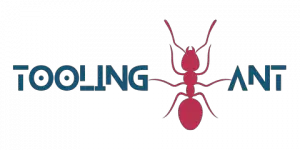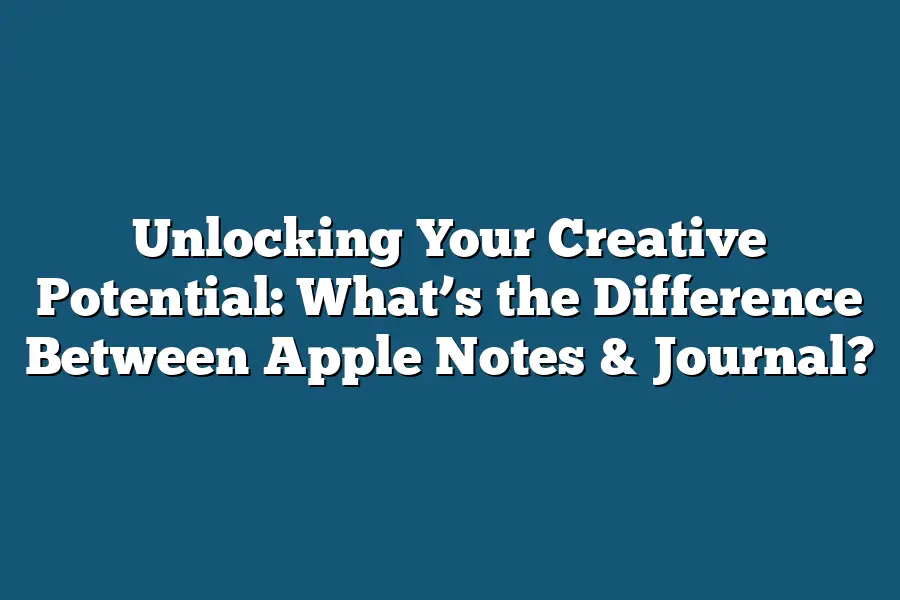Apple Notes and Journal are both digital note-taking tools, but they serve slightly different purposes. Apple Notes is a simple, streamlined app designed for jotting down quick thoughts, ideas, or reminders, whereas Journal is a more comprehensive tool that allows you to write longer-form reflections, journal entries, and even includes features like daily prompts and customizable layouts.
As I sit down to write this post, I’m reminded of the countless times I’ve asked myself: what’s the difference between scribbling notes in Apple Notes and pouring my heart onto paper in a journal?
For years, I’ve used note-taking apps to stay organized and focused, but there’s something about putting pen to paper that feels almost therapeutic.
It’s as if my thoughts are freed from the constraints of digital screens and allowed to flow onto the page like a river.
In this post, I’ll dive into the world of note-taking vs.
journaling, exploring what sets these two practices apart and how you can tap into your creative potential with journaling.
Table of Contents
Understanding the Basics of Note-Taking vs. Journaling
As someone who’s passionate about creativity and self-improvement, I’ve always been fascinated by the power of note-taking and journaling.
While many people might use these terms interchangeably, I’m here to tell you that they’re not one and the same.
In fact, understanding the difference between note-taking and journaling can be a game-changer for your personal growth and productivity.
So, what’s the main difference between Apple Notes and a journal?
To put it simply, note-taking is about recording information for future reference, whereas journaling is all about expressive writing for personal growth and reflection.
Let me break it down:
Note-Taking: Recording Information for Future Reference
When you’re taking notes, your goal is to capture key information, ideas, or tasks for later use.
This might include meeting notes, todo lists, or even simple reminders.
Note-taking is often a more structured process, with the focus on extracting and organizing relevant data.
For example, I’m a big fan of using Evernote to jot down meeting notes, article summaries, or research findings.
It’s an incredibly useful tool for keeping track of my thoughts and ideas across multiple projects and tasks.
Journaling: Expressive Writing for Personal Growth and Reflection
Journaling, on the other hand, is all about expressing yourself through writing.
This might involve diary entries, creative writing, or even simply reflecting on your experiences and emotions.
The primary goal is to process your thoughts, feelings, and insights in a way that fosters personal growth and self-awareness.
For instance, I love using my journal to reflect on my daily accomplishments, set goals for the next day, or even just brainstorm ideas for creative projects.
It’s an incredible tool for gaining clarity, releasing emotions, and setting intentions.
The Power of Both: Combining Note-Taking and Journaling
Now that we’ve covered the basics, let’s talk about how you can combine note-taking and journaling to supercharge your productivity and creativity.
By using both techniques in harmony, you’ll be able to:
- Capture key information and ideas through note-taking
- Process your thoughts and emotions through journaling
- Reflect on your progress and adjust your strategy as needed
For example, I like to start my day by taking notes on the tasks I want to accomplish.
Then, after completing those tasks, I take a few minutes to reflect on what went well, what didn’t, and what I can improve on tomorrow.
This combination of note-taking and journaling helps me stay focused, motivated, and adaptable.
In conclusion, understanding the difference between note-taking and journaling is crucial for unlocking your creative potential.
By recognizing when to use each technique, you’ll be able to tap into their unique benefits and take your personal growth and productivity to the next level.
So go ahead, give it a try – and see how these two powerful tools can transform your life!
The Difference Between Apple Notes & Journaling: Unleashing Your Creative Potential
As a creative type, you’re probably no stranger to note-taking apps or journaling.
But have you ever stopped to think about what makes them different?
In this post, we’ll dive into the world of Apple Notes and journaling, exploring the characteristics that set each apart.
Characteristics of Apple Notes
When it comes to Apple Notes, the focus is on organization and information storage.
This app is designed for productivity and efficiency, making it perfect for busy bees who need to jot down reminders, ideas, or tasks on-the-go.
Limited creative expression is also a hallmark of Apple Notes – you won’t find any prompts or exercises to get your creative juices flowing.
Take, for instance, the popular note-taking strategy, Cornell Notes.
This method involves dividing a page into two sections: notes and summary.
The idea is to review and recall information more effectively by summarizing key points in the second section.
Apple Notes makes it easy to implement this technique, allowing you to create separate sections or “folders” for different projects or topics.
Characteristics of Journaling
Now, let’s flip the script and explore journaling – a world where personal reflection and creativity take center stage.
When you journal, you’re not just writing down thoughts; you’re actively processing emotions, exploring ideas, and cultivating self-awareness.
The beauty lies in the unlimited space for expressive writing – no word count restrictions or character limits to worry about!
Journaling is all about embracing the unknown and allowing yourself to be guided by intuition rather than logic.
It’s an invitation to tap into your inner world, where creativity knows no bounds.
You can write poetry, short stories, or even sketch out ideas for art projects – the possibilities are endless!
What’s the Difference?
So, what sets Apple Notes apart from journaling?
The primary difference lies in their respective purposes and approaches:
- Apple Notes is designed for organization, information storage, and productivity.
- Journaling is centered around personal reflection, creativity, and self-discovery.
While both have their benefits, it’s essential to understand that they cater to different needs.
If you’re looking to streamline your workflow or store information efficiently, Apple Notes might be the better choice.
However, if you’re seeking a space to explore your thoughts, emotions, and creativity, journaling is the way to go.
In conclusion, understanding the characteristics of both Apple Notes and journaling can help you unlock your creative potential.
By embracing the unique strengths of each, you’ll find yourself more productive, reflective, and creatively fulfilled.
So, which one will you choose – or perhaps, like me, you’ll do a little bit of both?
Tapping into Your Creative Potential with Journaling
Hey there, fellow creative types!
Are you struggling to unlock your full potential?
Do you feel like there’s a lid on your creativity that just won’t budge?
Well, buckle up, because today we’re diving into the wonderful world of journaling.
That’s right – I’m talking about good ol’ fashioned writing down your thoughts, feelings, and ideas.
Now, you might be wondering: what’s the difference between Apple Notes and journaling?
Well, let me tell you – it’s like comparing apples to oranges (pun intended).
While both can be useful tools for recording your thoughts and ideas, they’re fundamentally different in terms of their purpose and impact on your creative potential.
Benefits of Journaling
Journaling has been shown to have a plethora of benefits, from reducing stress and anxiety to improving writing skills and increasing self-awareness.
By putting pen to paper (or fingers to keyboard), you’re giving yourself permission to tap into your subconscious mind, allowing ideas to flow freely and your creative potential to soar.
Tips for Effective Journaling
So, how do you get started with journaling?
Here are some tips to help you unlock your full potential:
Start Small and Commit to a Regular Routine
Don’t try to tackle the world in one journal entry.
Instead, start small by committing to a regular routine – even just 10-15 minutes a day can make a huge difference.
The key is consistency.
Experiment with Different Formats and Mediums (Digital, Analog, etc.)
Journaling isn’t just about putting words on paper; it’s about experimenting with different formats and mediums that work best for you.
Try digital journaling apps like Evernote or Day One, or go old-school with a physical notebook and pen.
Don’t Worry About Grammar or Spelling; Focus on the Process
Remember, your journal is for your eyes only (or not – it’s up to you!).
Don’t worry about grammar, spelling, or sentence structure.
Just focus on the process of putting your thoughts down on paper.
In conclusion, journaling is a powerful tool that can help unlock your creative potential and improve your overall well-being.
By committing to regular journaling, experimenting with different formats and mediums, and focusing on the process rather than the product, you’ll be amazed at how your creativity and self-awareness can flourish.
So, what are you waiting for?
Grab a pen and paper (or open up that digital journal), and let’s get started on this creative journey together!
Final Thoughts
As I wrap up this exploration of note-taking versus journaling, I’m reminded that unlocking my creative potential has less to do with the tools I use and more to do with my willingness to express myself honestly.
Apple Notes may help me stay organized, but it’s my journal that allows me to tap into my creativity, reflect on my experiences, and grow as a person.
By embracing the freedom of journaling, I’ve discovered that it’s not just about putting words on paper – it’s about cultivating self-awareness, finding stress relief, and improving my writing skills.
As you begin your own journey in unlocking your creative potential, remember to start small, experiment with different formats, and don’t worry too much about perfection.
The true magic happens when you let go of fear and allow your thoughts to flow onto the page.


